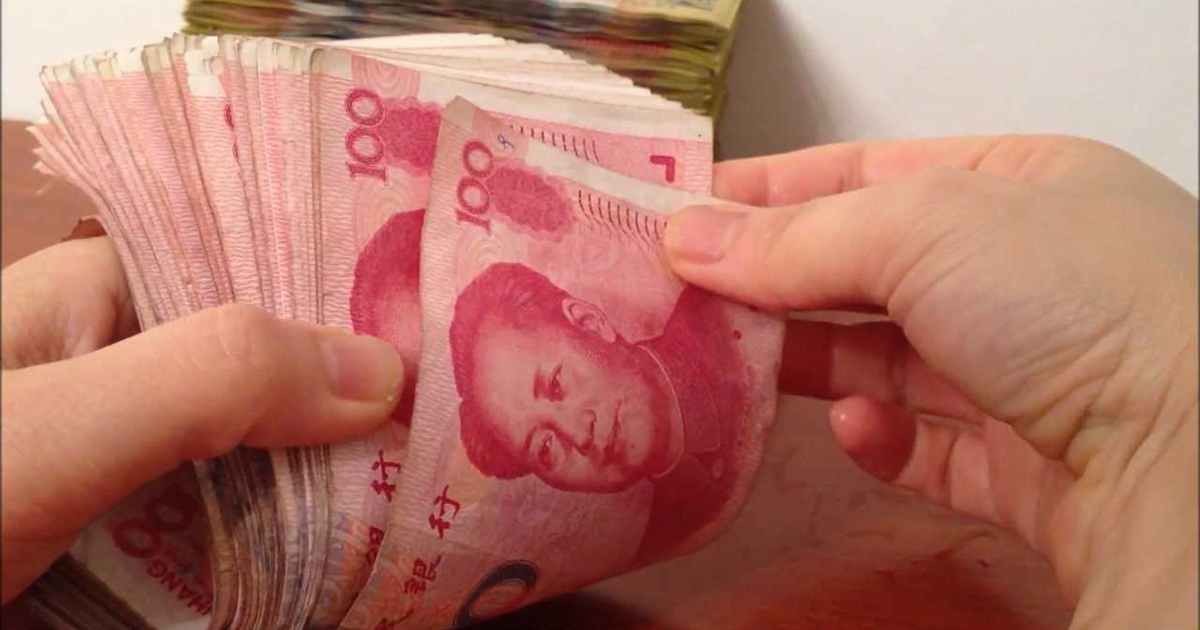China has reinforced the perception that it is a currency manipulator as it allowed the yuan to fall to its lowest point in more than 11 years on Monday, Aug. 26, 2019.
The onshore yuan fell to 7.1487 to the US dollar.
This move comes as the United States trade war looks to worsen, and a global recession looks likely.
How is value of yuan determined?
The People's Bank of China sets a figure each day to reflect market trends and control volatility.
On Monday, the Chinese central bank set the figure at 7.057 to the dollar.
It has set that rate steadily weaker in recent weeks.
What happens when the yuan weakens?
Allowing the yuan to depreciate makes Chinese exports cheaper and offsets some of the burden of punitive US tariffs.
The Chinese government has been suspected of meddling with the mechanism when the currency moves don't suit its aims.
It has also been seen guiding weakness against the currencies of its trading partners to try to help Chinese exports.
This sort of manipulation gives the central bank, rather than the market, overall control.
When was the last time the yuan fell to this level?
The last time the yuan hit these levels was in early 2008.
Three years ago, in August 2016, when things were looking rosier for China, the yuan was 6.6375 to the dollar.
What does the Chinese government do to manipulate value of yuan?
The authority restricts onshore yuan moves through a daily reference rate.
The yuan is not a freely convertible currency.
This is despite the International Monetary Fund deciding in November 2015 that the yuan was freely usable enough to become a global reserve currency.
However, the Chinese government still limits the yuan's movement against the dollar to a 2 percent range on either side of a figure.
In fact, the yuan isn't anywhere close to being fully convertible.
A true free float is as far as eight to 10 years away, or more.
Fully convertible currency has no capital restrictions and no currency interventions, for example.
China should increasingly let market forces play a bigger role in deciding the daily reference rate.
Interventions might become smaller in magnitude and less frequent, but they will remain and not just to smooth volatility.
Chinese government intervention in markets
Chinese authorities have a long history of meddling in markets.
When local stocks suffered a US$5 trillion crash in 2015, Chinese state-linked funds stepped in to support the market.
But share prices still fell to new lows at the start of 2016.
Yuan weakening to deal with effects of trade war
The yuan breached the key 7.0 threshold against the dollar earlier in August.
This occurred within days of the US announcing plans to impose fresh tariffs on Chinese imports from Sept. 1, 2019.
Washington officially branded Beijing a "currency manipulator" when the plunge went past 7.0.
China's central bank has "resolutely opposed" the label.
The US and China are raising tariffs on each other's imports.
President Donald Trump has called on US businesses to pull out of China.
However, the IMF said on Aug. 9 that it sees little evidence that China’s central bank has deliberately reduced the value of the nation’s currency.
This is a position at odds with the Trump administration’s decision in early August of accusing Beijing of manipulating the yuan.
If you like what you read, follow us on Facebook, Instagram, Twitter and Telegram to get the latest updates.
